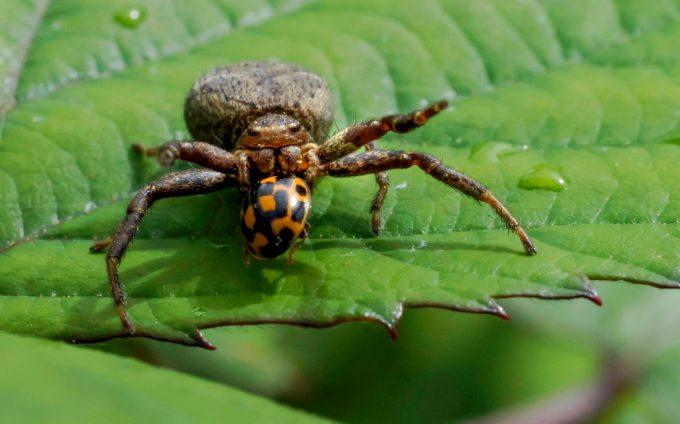
Different Spider Bites: A Comprehensive Guide
Spider bites can range from mild to severe, and it’s essential to understand the differences between them to ensure proper treatment. In this article, we will delve into the various types of spider bites, their symptoms, and the necessary precautions to take.
Common Types of Spider Bites
There are several types of spider bites, each with its unique characteristics. Here are some of the most common ones:

| Spider | Location | Common Symptoms |
|---|---|---|
| Black Widow | North America | Severe pain, muscle cramps, nausea, vomiting, fever, and sweating |
| Brown Recluse | United States | Mild pain at the bite site, followed by a red, blue, or purple sore that may become necrotic |
| Hobo Spider | North America | Mild pain at the bite site, followed by a red, blue, or purple sore that may become necrotic |
| Funnel-Web Spider | Australia | Severe pain, sweating, nausea, vomiting, and difficulty breathing |
As you can see, the symptoms of spider bites can vary greatly depending on the type of spider. It’s crucial to identify the spider responsible for the bite to determine the appropriate treatment.
Identifying Spider Bites
Identifying a spider bite can be challenging, especially if the spider is not immediately visible. However, there are some signs to look out for:
-
Immediate pain or stinging sensation at the bite site
-
Redness, swelling, or bruising around the bite
-
Wheals or blisters forming around the bite
-
Severe symptoms, such as difficulty breathing, fever, or chills
Remember, if you suspect a spider bite, it’s always best to seek medical attention immediately.
Preventing Spider Bites
Preventing spider bites is the best way to avoid complications. Here are some tips to help you stay safe:
-
Keep your home clean and clutter-free, as spiders often hide in dark, undisturbed areas.
-
Seal any cracks or gaps around your home, as these can serve as entry points for spiders.
-
Wear gloves when handling items that may have been in contact with the ground or outside.
-
Be cautious when walking in tall grass or brush, as these areas are common habitats for spiders.
-
Keep outdoor lights off at night, as they attract insects and, in turn, spiders.
Treatment for Spider Bites
The treatment for a spider bite depends on the severity of the symptoms and the type of spider responsible. Here are some general guidelines:
-
Mild bites: Clean the bite site with soap and water, apply a cold compress, and take over-the-counter pain relievers.
-
Severe bites: Seek immediate medical attention. Treatment may include antivenom, pain relievers, and intravenous fluids.
It’s important to note that some spider bites can be life-threatening, so it’s crucial to seek medical attention if you experience severe symptoms.
Conclusion
Spider bites can range from mild to severe, and it’s essential to understand the differences between them to ensure proper treatment. By identifying the type of spider, taking preventive measures, and seeking medical attention when necessary, you can minimize the risk of complications.





